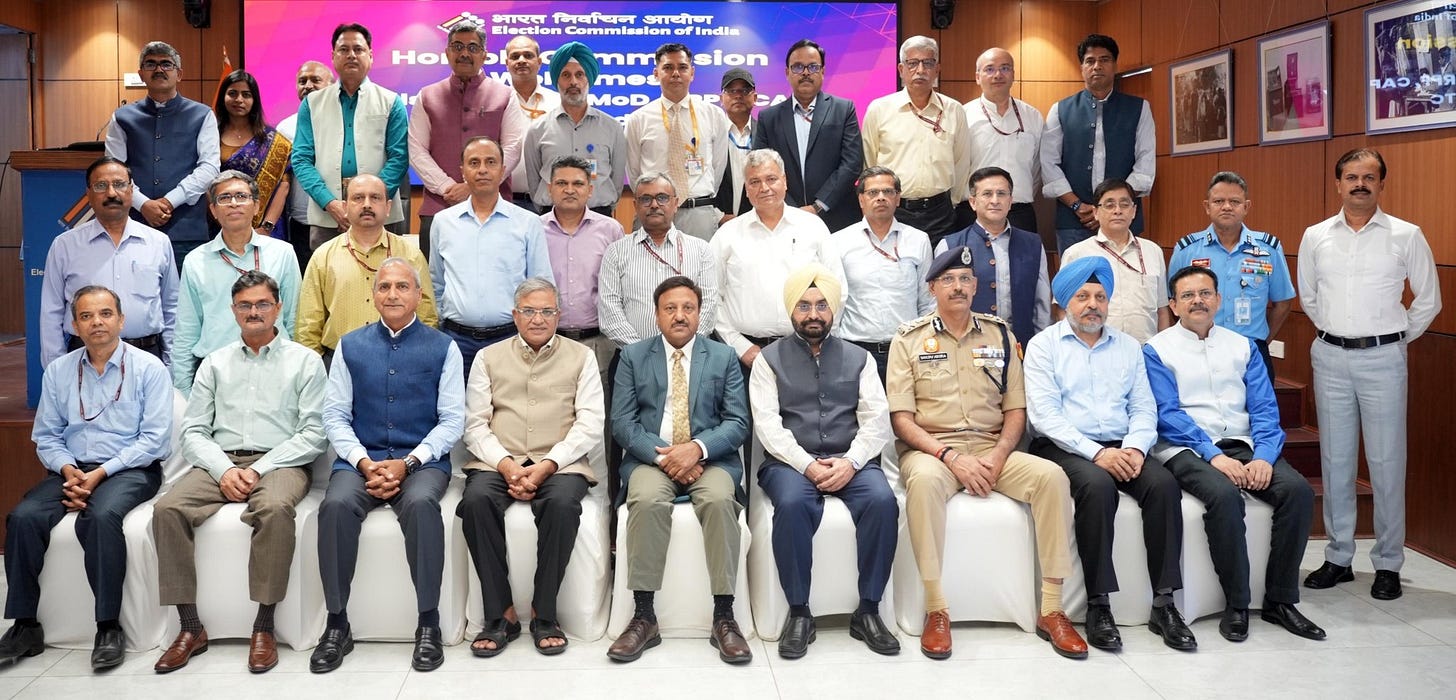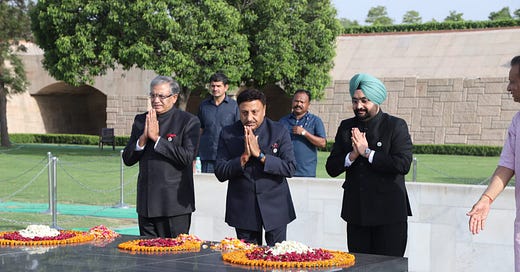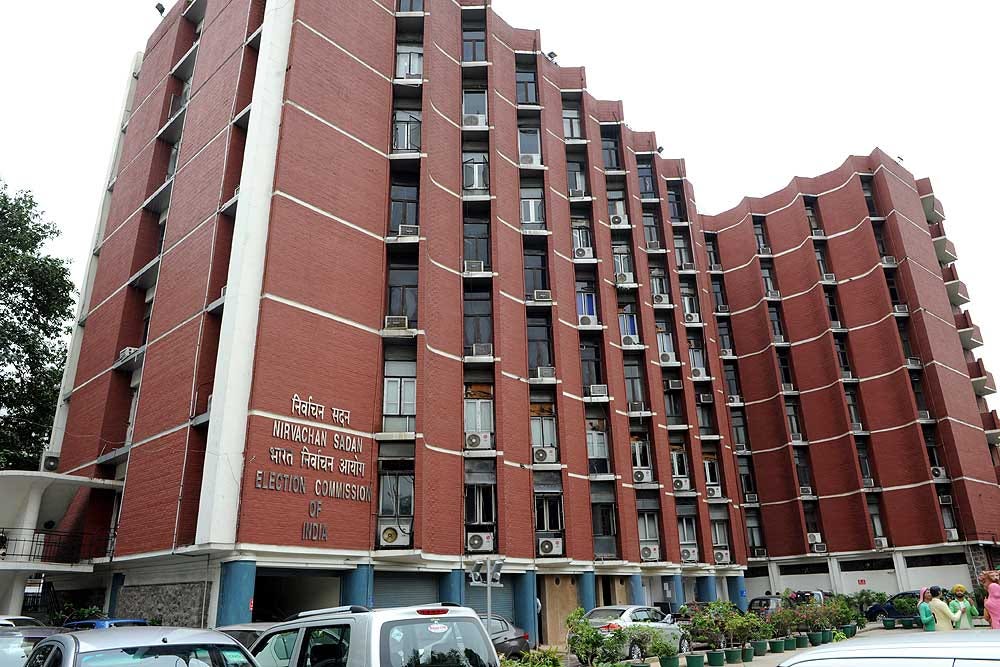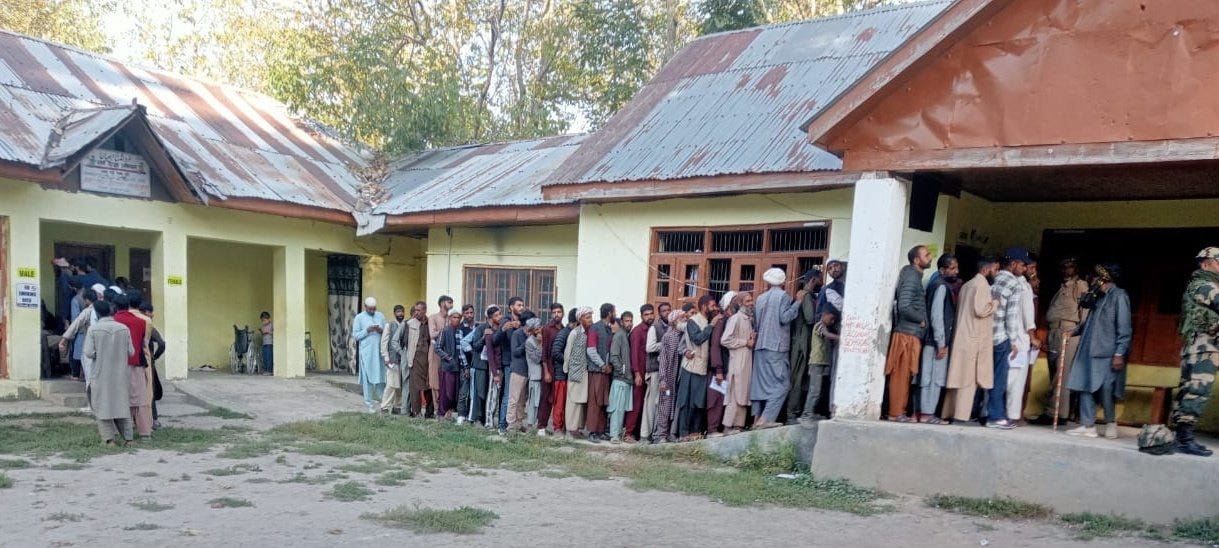Election Commission: You Can "Count on" Us. Can You?
Explore why discrepancies between initial and final vote counts occur, the robust safeguards of the EVM system, and why calls for a return to paper ballots are misguided.
Initial Vote Count vs. Final Figures: Explaining the Discrepancy
In recent years, particularly during elections such as the recent Maharashtra Vidhan Sabha polls, questions and controversies have frequently arisen regarding discrepancies between the total votes reported at the close of polling and the final figures declared by the Election Commission of India (ECI). These issues often intensify after the counting process concludes and results are announced, with losing candidates, opposition parties, and their supporters raising concerns about electoral integrity. TV channels and social media platforms amplify these debates, sometimes fueling public skepticism about the transparency of the democratic process.
However, a closer examination of the electoral system reveals that these variations are not signs of malpractice but rather the inevitable outcome of well-established protocols designed to ensure inclusivity and accuracy. This article delves into the reasons behind such differences and highlights the mechanisms that safeguard the sanctity of India’s elections. By understanding these processes, citizens can resist falling prey to insidious propaganda that seeks to undermine faith in the democratic process carried out under the direction, superintendence, and control of the ECI.
The Queue Factor: Late Votes and Accurate Tallying
A key factor behind the apparent increase in vote counts after polls close is the protocol allowing voters in the queue at the official closing time to cast their votes. Electoral rules mandate that all individuals present in the line at the designated closing hour be issued tokens, permitting them to vote regardless of how long the process takes thereafter.
This means that votes cast after the polling station’s official closing time are recorded and included only in the final tally. While these votes may not appear in the initial counts reported at the closing hour, they constitute a legitimate and integral addition to the overall figures. The “queue factor” reflects the system’s commitment to ensuring that every eligible voter has the opportunity to exercise their right to vote.
Prematurely adding the number of tokens issued to the votes polled could create confusion, as some individuals in the queue may choose to leave without voting, or may be deemed ineligible for various reasons. By adhering to this method, the electoral process maintains clarity and accuracy, ensuring that only valid votes are counted in the final tally.
Form 17C: The Backbone of Electoral Transparency
Central to the vote-counting process is Form 17C, a comprehensive record maintained by the presiding officer at each polling booth. This document is a cornerstone of transparency, providing a detailed account of:
Total Registered Voters: The number of eligible voters assigned to the booth.
Actual Votes Cast: The number of people who successfully cast their ballots.
Non-Voters: Individuals who signed the register but chose not to vote.
Votes Recorded in the EVM: The final count registered in the Electronic Voting Machine (EVM).
Upon completing Form 17C, the presiding officer is required to share copies with polling agents from all contesting parties. This ensures that all stakeholders have access to accurate and detailed records of votes polled at each station, fostering trust and reducing room for ambiguity.
For those questioning the integrity of election results, Form 17C serves as a powerful verification tool. It allows cross-referencing between the recorded figures at polling stations and the final EVM tallies. By scrutinizing this document, discrepancies can be identified and addressed, reinforcing confidence in the counting process.

Postal Ballots: The Overlooked Contributor
Another factor contributing to variations between initial and final vote counts is the inclusion of postal ballots. These ballots are primarily used by:
Service Voters: Members of the armed forces stationed away from their constituencies.
Election Duty Personnel: Officials involved in conducting the elections.
Postal ballots are not tallied at polling booths and do not appear in Form 17C. Instead, they are submitted directly to the Returning Officer and counted separately. Their addition to the final vote tally is an essential aspect of the process but is often misunderstood or overlooked in public discourse.
Verifying Electoral Integrity: Checks and Balances
India’s electoral system incorporates multiple safeguards to ensure the accuracy and fairness of vote counting:
Real-time Monitoring: Votes recorded in EVMs are monitored and sealed after polling.
Transparency through Form 17C: Copies provided to polling agents ensure that parties can independently verify results.
Separate Handling of Postal Ballots: This ensures service voters and on-duty officials are not disenfranchised.
These mechanisms reflect a deliberate effort to create a robust system where each vote counts. Critics are encouraged to engage with these processes, especially by analyzing Form 17C, before casting aspersions on the integrity of the results.
Ensuring Integrity Beyond Counting: The Larger Framework
While this article focuses on the votes polled and accounted for as per Form 17C, it is important to acknowledge the broader protocols that uphold the integrity of the electoral process. The initialization and randomization of Electronic Voting Machines (EVMs), the random appointment of polling staff, and the stringent security measures for EVMs in strong rooms are critical components of this framework.
Once polling concludes, EVMs are stored in secure strong rooms, where candidates' agents are allowed to place their own seals on the locks for added assurance. These agents can even remain on-site, often sleeping in the verandahs near the strong rooms, to ensure transparency and prevent unauthorized access. These measures collectively aim to safeguard the process and bolster public confidence.
Although these aspects are fundamental to the overall electoral system, they lie beyond the scope of this article, which remains focused on understanding the mechanisms surrounding vote counts and Form 17C. Nonetheless, they highlight the meticulous safeguards designed to ensure that elections in India are conducted fairly and credibly.
Paper Ballots: A Step Backward in Electoral Transparency
The call for a return to paper ballots, championed by several political parties, including the Congress, has reignited debates about electoral integrity. However, those who have witnessed the paper ballot system firsthand can attest to its numerous flaws and contentious nature.
Manipulation at the Polling Station: Under the paper ballot system, malpractices such as smuggling out blank ballots, pre-marking them in favor of a candidate, and handing them to voters to deposit into the ballot box were rampant. Voters often had no choice but to follow these instructions, as any double marking or invalidation of the ballot rarely altered the outcome.
Disruptions and Disputes: Paper ballots frequently led to contentious disputes during the counting process. Doubtful ballots—those double-marked, marked with incorrect instruments, or placed on dividing lines—required individual scrutiny. Returning officers were often drawn into protracted arguments over these ballots, significantly delaying the counting process as no new rounds could begin until all disputes were resolved.
EVMs: Addressing Key Challenges: The transition to Electronic Voting Machines (EVMs) has resolved many of these issues. Unlike paper ballots, EVMs eliminate invalid votes, barring rare cases where voters deliberately abstain from pressing any button. This technological shift ensures greater transparency, speed, and accuracy during counting, removing the scope for disputes over vote validity.
Future of EVMs: Technological Upgrades Needed: While EVMs are a significant improvement, they rely on decades-old technology that could benefit from modern enhancements. The Election Commission should actively explore upgrades to further minimize vulnerabilities, whether through hacking or physical security breaches. However, such improvements must be meticulously designed to ensure that the integrity of the electoral process remains uncompromised and no mechanism can alter the true electoral mandate.
A return to paper ballots would be a regressive step, akin to embracing outdated and flawed practices. Instead, the focus should remain on refining and securing EVM technology to uphold the credibility of India's democratic process.
Conclusion: A System Built for Transparency
The Indian electoral process, though intricate, is firmly rooted in principles of fairness, inclusivity, and transparency. The perceived discrepancies in vote counts from polling closure to final declaration are not anomalies but rather the outcome of rigorous mechanisms designed to ensure every eligible voter’s voice is counted.
While challenges may arise in any system of this scale, the comprehensive safeguards in place—from the protocols for EVM initialization, randomization, and security to the meticulous documentation in Form 17C and the handling of postal ballots—serve as pillars of electoral integrity. These measures collectively form a robust framework that not only upholds public trust but also enhances the credibility of the process.
By understanding these nuanced procedures and engaging constructively with the system, citizens and stakeholders can help reinforce confidence in the electoral process, making Indian democracy not only the largest but also the most exemplary in the world. Through collective awareness and participation, we continue to uphold the values that make India’s democratic system a beacon for others to follow.








Tragedy is that despite transparency and meticulous safeguards used even by political parties , the adverse reporting actually begins with commencement of counting process. Reason for this is not hard to find. Political Parties find huge difference in the votes reported to have been polled worked on the assessment of their booth level workers, as against the final result. The functioning and doctoring of the EVM is alleged as an alibi , by the politicians , as their workers earlier on do indulge in glorification of their hard work and the expected outcomes, to create a false picture , more to justify the incurred expenditure . Every major party has active booth level workers who participate in each step of poll including the setting up of polling station, preparation and sealing of EVM , demonstration of functioning of EVM which is done by every presiding officers before the poll begins. Counting Officers also clearly inform the voter turn out and votes to be found in the machine. All seals of Control Unit are also seen and examined by the stakeholders and agents also sign the statements and tags.
In future whenever the EVM process is called to question on any ground especially on the functioning of EVM the documents related to the signatures put by these agents at the time of polling about the correctness of the process , should also be scrutinized
Thanks Siddhu Sahab for this enlightening piece of work.